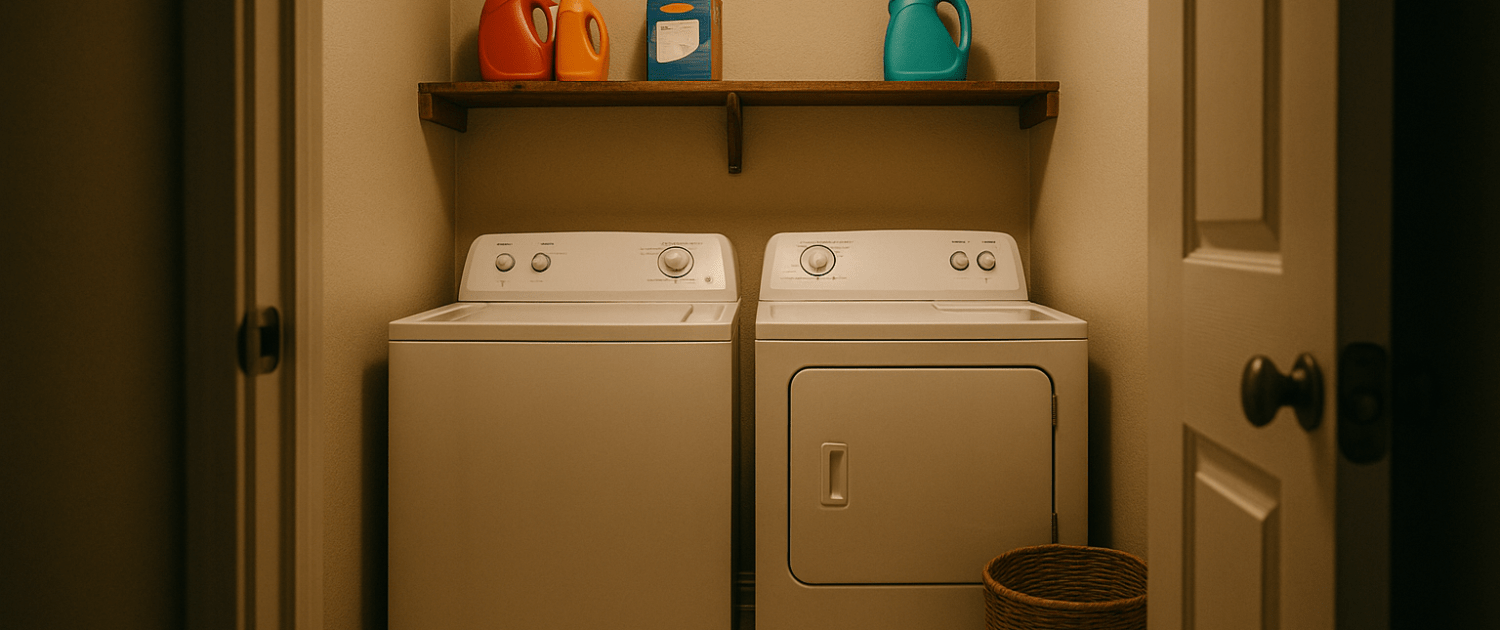The Best Way to Fix GE Top Load Washer Motor Issues
Steven E / Thursday September 18, 2025
Looking for the right part? Enter your appliance model number below to find the exact match and get your appliance running like new again!
If your GE top load washer isn’t agitating, making unusual noises, or simply refusing to spin like it should, don’t worry, you’re not alone. These are common symptoms that often point to a problem with the drive motor. When the motor fails, your washer’s drum can’t move properly, leaving you stuck with wet, unwashed, or unspun laundry.
Even if this is your first appliance repair, you’ll find it’s much more approachable than you think. With just a few tools and a little time, you can get your washer back in business without the cost of a professional service call.
So grab your toolbox, let’s dive in, and before you know it, your laundry will be spinning like new.
Tools You’ll Need:
- Multimeter (for testing voltage and continuity)
- Block of wood (to help support the tub during removal)
- Putty knife (to release locking tabs on the front panel)
- 1/4-inch nut driver
- 3/8-inch wrench or socket
Safety First
Always disconnect your washer before beginning. You can either unplug it or switch off the breaker at your electrical panel. Working with electricity can be dangerous if you don’t take precautions.
Step 1: Releasing the Front Panel
To reach the motor, you’ll need access inside your washer cabinet.
- Grab your putty knife.
- Insert it about 3 to 4 inches in from each corner at the top of the front panel. This will release the locking tabs.
- Rotate the panel forward, lift it up, and set it aside in a safe spot.
With the front panel off, you now have clear access to the components inside your washer.
Step 2: Testing the Motor Harness with a Multimeter
Before removing the motor, it’s smart to test the motor harness. This will confirm whether the motor is receiving proper voltage.
- Reconnect the power cord, you’ll need the machine plugged in for this step.
- Set your multimeter to Volts AC (look for “V” with a squiggly line).
- Locate the motor harness, this is the set of wires connected to your motor.
- Place your multimeter leads between the red wire with a black stripe and the white wire with a red stripe.
You should see 120 volts AC. If you don’t get 120 volts, the problem may not be the motor, it could be the control board, wiring, or another issue upstream. If you do see 120 volts, but your motor isn’t working, it’s likely the motor itself is faulty.
Step 3: Observing the Motor’s LED Indicator
Most GE washer motors have a built-in LED indicator light that can give you quick diagnostic information.
- Locate the small LED on the top of the motor.
- Watch the flash pattern carefully.
Here’s what the flashes mean:
- 1 long flash, then pause = Motor failure
- 3, 5, or 9 flashes = Motor failure
- 1 second on, 1 second off = Motor is okay; continue troubleshooting
- Any other flash pattern = Indicates a specific fault (cross-reference with your washer’s technical sheet for details)
This quick visual test can save you time and confirm whether the motor itself needs replacing.
Step 4: Disconnecting Wires & Preparing for Motor Removal
Once you’ve confirmed the motor is the culprit, it’s time to disconnect and remove it.
- Unplug the washer again for safety.
- Disconnect the motor wire harness by gently pressing the tabs and pulling the connectors free.
- Remove the drive belt by sliding it off the motor pulley and the large drive pulley.
- Place a block of wood under the front of the tub to lean it back slightly; this makes removal easier.
Step 5: Removing the Motor
Now comes the main event:
- Grab your 3/8-inch wrench or socket.
- Remove the nut securing the motor to the drive assembly.
- Once the nut is free, carefully lift the motor out of place.
And just like that, you’ve got the old motor in your hands.
Step 6: Installing the New Motor
Now, let’s put your washer back together.
- Position the new motor in the drive assembly.
- Secure it with the 3/8-inch nut you removed earlier.
- Reinstall the drive belt, looping it around the motor pulley and the large drive pulley.
- Remove the block of wood from under the tub.
- Reconnect the motor wire harness.
Step 7: Reassembling the Washer
You’re in the home stretch now!
- Grab the front panel you removed earlier.
- Align it with the bottom lip of the washer cabinet.
- Rotate it back up into place until the locking tabs snap in.
With the panel secured, your washer looks whole again.
Step 8: Powering Up & Testing
Now it’s time to test your repair.
- Plug the washer back in or flip the breaker on.
- Select a wash cycle and press start.
- Listen for the motor to kick in and watch for proper agitation or spin.
If everything runs smoothly, congratulations! You’ve just replaced the motor in your GE top load washer.
Where To Find Us
If you need any replacement parts for your appliances, you can enter your model number at AppliancePartsPros.com to locate and order them quickly. Most orders arrive in just two business days, and we have tons of great information in our repair help section and YouTube videos to help you troubleshoot.
Stay connected with the latest DIY tips, tutorial videos, and repair guides by following us on Facebook, Instagram, and Twitter. We love hearing about your repair stories and successes. If you need more help or want personalized guidance, feel free to contact or call us at 877-477-7278. We’re ready to help you take on your next project with confidence!
Since 1999, AppliancePartsPros.com has helped millions of people repair their broken appliances by providing high-quality original parts at well below retail prices, free support and troubleshooting, and award-winning customer service from an expert, friendly, US-based customer support team!
With nearly a decade of experience in providing top-notch customer service regarding appliance parts and repair, Steven enjoys sharing practical advice, troubleshooting tips, and interesting information to help readers stay informed.






Leave a Reply
Want to join the discussion?Feel free to contribute!